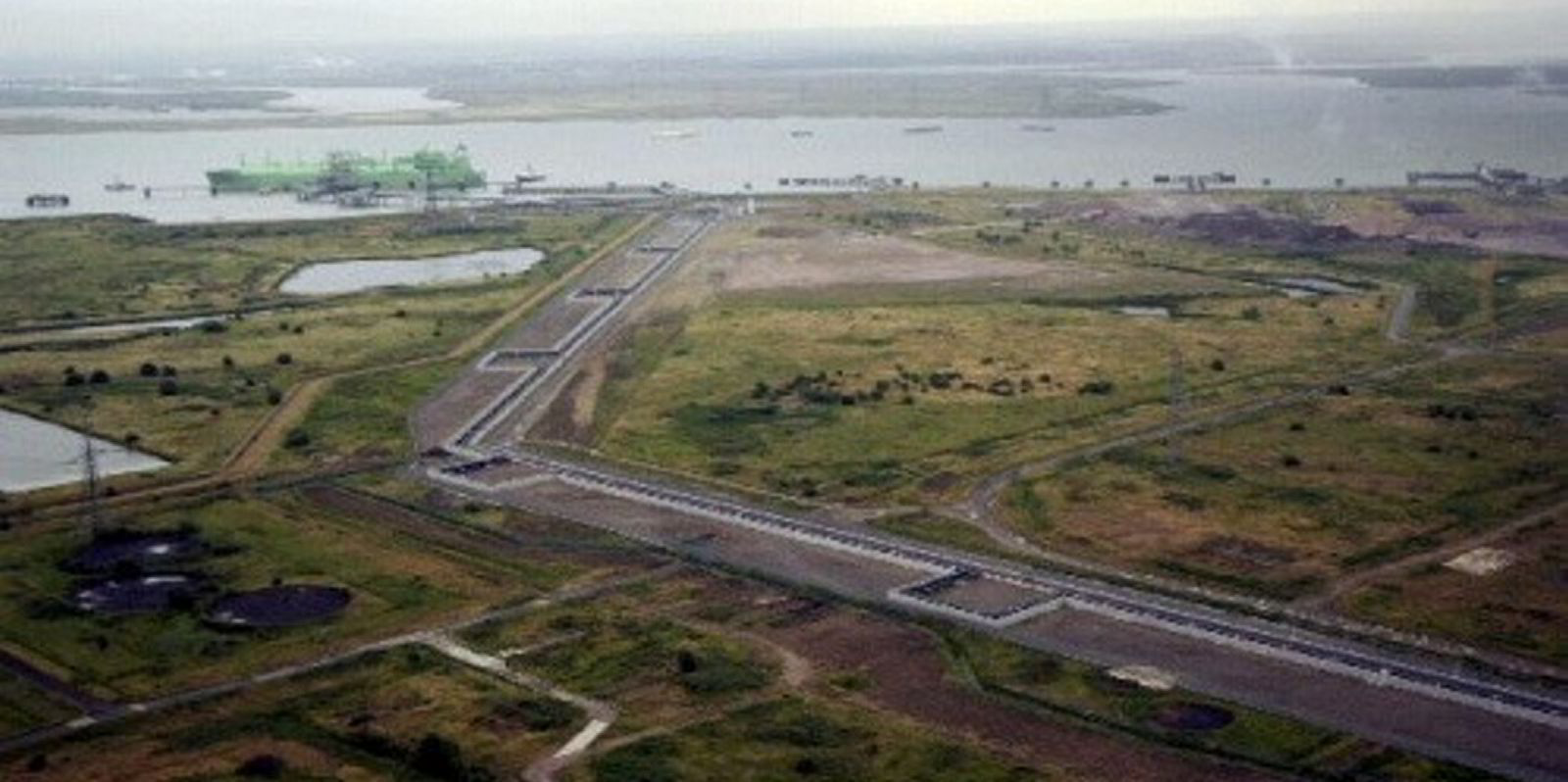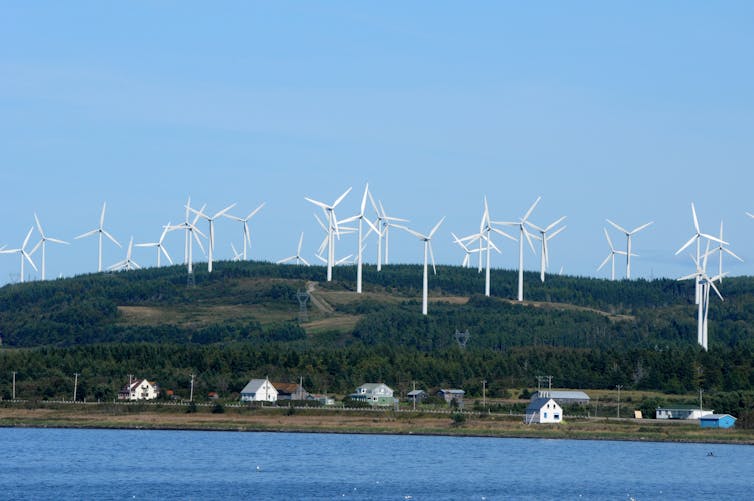'MAYBE'TECH BLUE H2
Louisiana governor ‘supremely confident’
Air Products’ $4.5B clean energy complex will pay off
Louisiana Gov. John Bel Edwards announced a $4.5 billion clean energy commitment Thursday from industrial gas manufacturer Air Products.
The company pledged the investment to build “the world’s largest permanent carbon dioxide sequestration endeavor to date,” and will receive millions in taxpayer-funded business incentives in return.
Air Products’ plan involves producing massive amounts of blue hydrogen and sequestering the carbon dioxide generated through the manufacturing process.
“Carbon capture and sequestration are important to Louisiana’s efforts to reduce carbon dioxide emissions while maintaining jobs and growing our manufacturing base," Edwards said. "This project is a clear demonstration of our ability to grow the Louisiana economy while lowering the carbon footprint of industry.”
The clean energy development is slated for Ascension Parish, near Burnside, and purportedly will deliver 170 jobs with an average annual salary of $93,000 plus benefits. Louisiana Economic Development estimated the project also could lead to 413 new indirect jobs.
During a news conference at the Louisiana Capitol, Edwards said he was “supremely confident” the deal would deliver economic benefits while helping the environment. He also said "we don't really have a choice.”
“No matter how you slice it and dice it, this is a big deal,” Edwards said. “I think the risk, quite frankly, to all of us, is in not doing projects of this type. It’s a risk in terms of the economy because there’s an energy transition underway and we’re powerless to stop it. We’re either going to take advantage of the opportunities we’re given or we’re going to lose.”
Air Products President and CEO Seifi Ghasemi praised Edwards during his prepared remarks and claimed “hydrogen is the clean energy of the future.”
Ghasemi said the sequestration plant is scheduled for completion in 2026. Once operational, he said, the plant would produce 750 million standard cubic feet of blue hydrogen per day.
“That’s enough energy to drive 3 million cars,” he said.
The hydrogen also would flow through a 700-mile pipeline from New Orleans through Texas and help “decarbonize” energy production along the way.
A news release said Air Products was offered “a competitive incentive package," including a $5 million grant to offset plant and pipeline construction costs. The grant is said to be performance-based and payable over five years.
The package also includes perks from the Industrial Tax Exemption Program (ITEP) and the Quality Jobs program.
ITEP will provide an 80% property tax abatement for five years, after which Air Products can receive an 80% property tax abatement for another five years on capital investments related to manufacturing.
The Quality Jobs program gives cash rebates for well-paying jobs.
“The program provides up to a 6% cash rebate of annual gross payroll for new direct jobs for up to 10 years,” Louisiana Economic Development said. Additional Quality Jobs giveaways include a state sales and use tax rebate on capital expenditures or a 1.5% project facility expense rebate.
Economists often criticize business tax incentives as “corporate welfare,” but Edwards said Thursday the partnership was “necessary” and “an obligation.”
“There is no state in the nation that is more affected by climate change than Louisiana,” he said.
The message dovetailed with Edwards’ trip to Scotland later this month to attend a United Nations climate change conference known as COP26.
“I want to be there to meet as many of those people as possible and talk to them about opportunities that they have right here in Louisiana,” he said.
Referring to Air Products, Edwards boasted: “This won’t be the last one you hear about.”
Air Products reveals $4.5 billion hydrogen, CCS complex in Louisiana
US company says the project will be its largest investment ever in the US
Seifi Ghasemi: Air Products' chief executive
RELATED NEWS
Falling short: IEA claims $1.2 trillion hydrogen investment needed by 2030 to hit net zero goals
Energy Transition
By Naomi Klinge
in Houston
US industrial gases company Air Products said it is developing a $4.5 billion clean energy complex in Louisiana, set to be the world’s largest blue hydrogen schemes so far.
The company will construct a blue hydrogen manufacturing complex near Burnside in Ascension Parish, producing more than 750 million cubic feet per day of blue hydrogen.
Blue hydrogen products are produced using hydrocarbons as a feedstock, with the CO2 in the production process captured for permanent sequestration.
Louisiana's State Mineral and Energy Board has approved the permanent sequestration of the CO2. More than an estimated 5 million tonnes per year of CO2 will be permanently stored about a mile below ground at inland sites.
Air Products said about 95% of the CO2 generated will be captured.
“Air Products is excited to announce this investment in clean energy with the governor of Louisiana,” chief executive Seifi Ghasemi said. “This landmark megaproject will not only create jobs but make Louisiana and Ascension Parish leaders in the US clean energy transition.”
With operations expected in 2026, the project could create 170 new direct jobs and 413 new indirect jobs in the region, with possibly more than 2000 construction jobs over three years.

Scottish CCS project signs new agreements to store CO2 from Thames Estuary blue hydrogen plantRead more
“Carbon capture and sequestration are important to Louisiana’s efforts to reduce carbon dioxide emissions while maintaining jobs and growing our manufacturing base,” Louisiana Governor John Bel Edwards said.
“This project is a clear demonstration of our ability to grow the Louisiana economy while lowering the carbon footprint of industry."
GREEN VS BLUE
Blue hydrogen is produced from natural gas feedstocks, with the carbon dioxide by-product from hydrogen production captured and stored. However, the process is not emissions free.
Green hydrogen is made using electrolysis powered by renewable energy to split water molecules into oxygen and hydrogen, creating an emissions-free fuel.
Air Products said a portion of the produced blue hydrogen will be compressed and supplied to customers via its own US Gulf Coast hydrogen pipeline network, which it said stretches more than 700 miles from Galveston Bay in Texas to New Orleans, Louisiana.
The network can supply more than 1.6 billion cubic feet of hydrogen per day from about 25 production facilities, including Air Products' own Port Arthur, Texas facility.
The balance of the blue hydrogen from the new Ascension Parish facility will be used to make blue ammonia that will be transported around the world and converted back to blue hydrogen for transportation and other markets.
As part of the agreement between Louisiana and Air Products, the state offered the company access to LED FastStart, a workforce development program through Louisiana Economic Development. Air Products also received a $5 million grant to offset construction costs for the plant and pipeline.(Copyright)
Read more
Gazprom Neft joins Sakhalin hydrogen pilot project
Australian state unveils 'world leading' green hydrogen strategy to drive $58.7bn investment
Eni and Progressive Energy aim to cast HyNet as CCUS vanguard project




.jpg?ext=.jpg) The Bruce site (Image: Bruce Power)
The Bruce site (Image: Bruce Power).jpg?ext=.jpg) (Image: Pixabay)
(Image: Pixabay).jpg?ext=.jpg) The Grohnde plant, which is due to shut down at the end of 2021 (Image: PreussenElektra)
The Grohnde plant, which is due to shut down at the end of 2021 (Image: PreussenElektra).jpg?ext=.jpg) Dismantling of the Oceanic Pintail's hull nearing completion (Image: NTS)
Dismantling of the Oceanic Pintail's hull nearing completion (Image: NTS)










